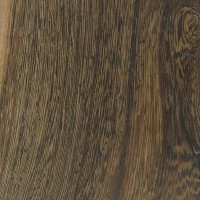  |
Common Name(s): Pheasantwood Scientific Name: Senna siamea (syn. Cassia siamea) Distribution: Native to South/Southeast Asia, widely planted throughout the tropics Tree Size: 50-65 ft (15-20 m) tall, 1-1.5 ft (.3-.5 m) trunk diameter Average Dried Weight: 50 lbs/ft3 (800 kg/m3) Specific Gravity (Basic, 12% MC): .62, .80 Janka Hardness: 1,490 lbf (6,640 N) Modulus of Rupture: 12,440 lbf/in2 (85.8 MPa) Elastic Modulus: 1,581,000 lbf/in2 (10.90 GPa) Crushing Strength: 10,150 lbf/in2 (70.0 MPa) Shrinkage: Radial: ~4%, Tangential: ~7%, Volumetric: ~12%, T/R ratio: ~1.8 |
Color/Appearance: Heartwood is a medium to dark brown, to nearly black, with ligher brown contrasting stripes, sometimes with a red or yellow hue. The striping is due to very wide parenchyma bands, which can give it an appearance somewhat similar to Wenge, though Pheasantwood’s stripes tend to be lighter and with better contrast, especially once a finish has been applied.
Grain/Texture: Grain can be interlocked or wavy, with a coarse texture. Pores naturally filled with resinous material which creates a smoother surface than other open-grained woods with large pores. Good natural luster.
Endgrain: Diffuse-porous; large to very large pores in no specific arrangement, few to very few; solitary and radial multiples of 2-3; reddish brown gum deposits abundant; parenchyma confluent, with wide bands of parenchyma typically as thick as the pores; narrow rays, spacing normal.
Rot Resistance: Rated as durable, though susceptible to insect attack.
Workability: Produces moderaately good results with hand and machine tools, though Pheasantwood has a high cutting resistance, and also produces a pronounced blunting effect on cutters. Glues, turns, and finishes well.
Odor: No characteristic odor.
Allergies/Toxicity: Cavities within the wood can sometimes contain a powder that causes eye and skin irritation, as well as skin discoloration. See the articles Wood Allergies and Toxicity and Wood Dust Safety for more information.
Pricing/Availability: Reported to be rare, and not commonly available. Usually only available as small turning squares and short lumber. Expect prices to be in the upper range for an imported hardwood.
Sustainability: This wood species is not listed in the CITES Appendices or on the IUCN Red List of Threatened Species.
Common Uses: Musical instruments (ukeleles and guitars), turned objects, carvings, and other small specialty wood items.
Comments: So named for the wood’s resemblance to the coloration and patterns found on the tail-feathers of pheasants. Pheasantwood exhibits the most figure on flatsawn sections of wood.
None available.
 |
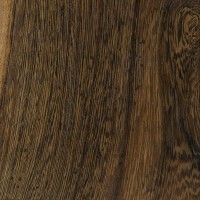 |
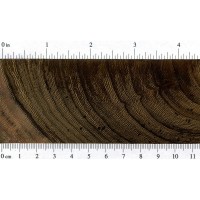 |
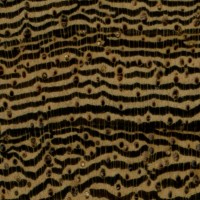 |
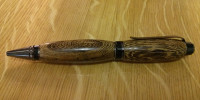 |




This wood has a unique look to it, very nice grain patterns. I find a bit of color variation too, some parts of the tree I got milled see to be more yellow with contrasting brown, to a golden brown contrasting with near black. Some spots even have some red to them. The dust is horrible, a mask is required or else you will gag. It’s really nasty to be around when working it. As for size, the tree I got was 4ft wide at the base, much larger than the 1.5ft they speak of here. It isn’t a common… Read more »
Here are some other photos, just to show more of the grain and color.
The tree isn’t rare in Thailand, they just don’t really do anything commercial with it. But very nice wood when you can get it
I found the site because I was trying to decide which to order for a Chinese martial arts weapon. They offer a choice of “Chicken Wing” or Mahogany, see pics attached. I’m fairly sure these two photos show the different woods in close-up. Comparing to the various woods listed under Mahogany, it seems the Pheasantwood is weaker than all of them.
Weaker or not, my Tai Chi Rulers made of Senna siamea suit optimally for health exercises.
Why is this wood so hard to get but is planted vastly?
Does this wood warp and check a lot with drying? I have some pieces that I really want to turn, but not sure of how dry it should be first. Is this more like black and white ebony, which wraps and checks very badly, or more like desert ironwood, which doesn’t move at all?
Your Pheasant Wood is almost certainly jichimu, a Chinese hardwood also known as Chicken Wing or Phoenix Tail Wood because of its usual signature feathery, colorful grain similar to some chicken and pheasant plumage. There are two kinds, old and new. You seem to have a cut of the new, which is still available but less desirable because it is coarse, straight, rigid and therefore apt to break with unclear, dark purplish-black straight grains. The furniture shown, on the other hand, appears to be of old jichimu, one of the three most prized Chinese hardwoods for furniture, in particular antique.… Read more »
Robert, I think you’re mistaken there. I’m here in Thailand and have a good portion of this wood in the shed, almost ready for use. Also, you’ll find it in the Hawaiian islands, where it is sold for premium prices. Although these trees are fairly common in SE Asia and are often planted as decoration in gardens and along roads, good lumber is rare because these idiots here are using it to make charcoal or bang nails in it, all over the tree, which makes it impossible to process in a mill (so, make charcoal of it!). If one is… Read more »
Senna siamea is one of the “Hongmu” tree and should be wery expensive.
https://eia-international.org/wp-content/uploads/EIA-The-Hongmu-Challenge-FINAL.pdf